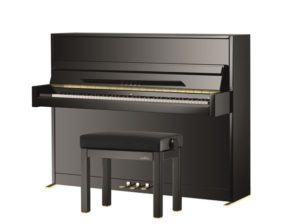This month marks the 10 year anniversary of my piano tuning “career”, when I enrolled on my piano tuning and repair course back in August 2011.
What made me decide to become a piano tuner? Long, long ago back I was a youth not long out of school, deciding what I wanted to do as a job, I was watching my own piano being tuned and serviced by another Sheffield piano tuner. I was interested in his technique and had questions about how he learned such a unique skill. I knew I wasn’t the archetypal piano man, but I’d always had a good ear for music and the moving mechanical parts interested me. At the time I wasn’t doing very much apart from reading books and listening to music, but the clock was ticking and I knew I should learn a profitable skill as soon as possible to avoid drifting. I thought piano tuning be a nice way to earn a comfortable living doing something moderately enjoyable and that not too many other people could do.
Was becoming a piano tuner a good decision? It depends on the day you ask me. The work itself is rewarding, but building a clientele in a declining industry has been a long, difficult slog and the battle is not yet won. Some weeks the money is very good, but suddenly there’s a drop off and it’s not always easy to predict when and why. I think it would have been a more satisfying job in the 1980s or earlier when pianos were ubiquitous and taken more seriously. However, there are signs of a piano revival which is nice to see.
What I hadn’t anticipated was how expensive piano parts would be to have in stock. I generally like to have back up action parts with me to avoid any second visits to the customers home and have been successful in this regard. But the sheer number of felts, hammers, springs, flanges, screws, glues, files, bridle tapes, strings, jacks, wippens, key coverings that I need to have in the car has taken years to build up. Unfortunately there isn’t an ‘industry standard’ for each part, as each piano is a different size and many are built in different countries and by different brands.
